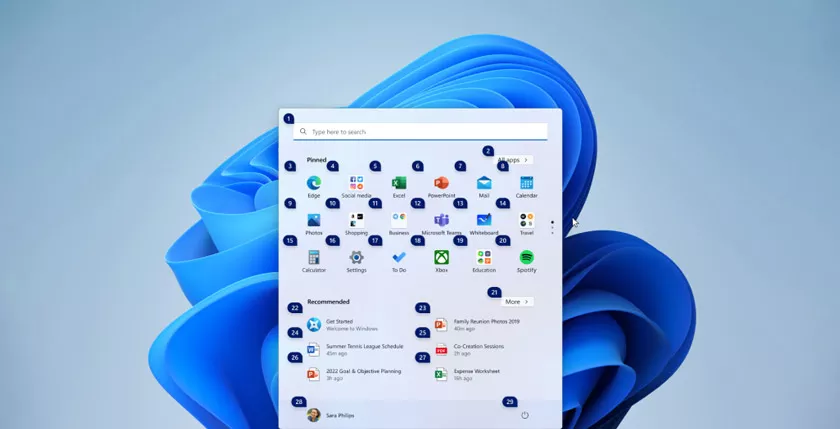Have you ever questioned whether the digital environment is as accommodating as it professes to be? In a world where we’re striving for inclusivity, how well is technology keeping up with our quest?

Windows’ Accessibility Features Make Education Inclusive or Do They?
Today, we’ll delve into one of the tech juggernauts, Microsoft’s Windows, to determine if its accessibility features are indeed transforming the realm of education to be more inclusive.
In discussing the evolving landscape of education, we must mention one of the most thrilling advancements — affordable paper writing services. In the modern digital epoch, consider these services as your scholarly fairy godmother, rushing in to offer much-needed assistance.
Imagine a squad of knowledgeable experts prepared to “write a speech for me – WritePaper,” leading you through the complex maze of academic writing.
Sounds almost too good to be true, doesn’t it? It’s time to bid farewell to countless sleepless nights and welcome a supportive hand capable of providing the academic advantage you seek.
So, as we deep-dive into Windows’ accessibility features, let’s remember that to make education inclusive, we need to embrace the whole package. From adaptive tech to professional thesis writing services. Let the exploration begin!

Embracing the Digital Age
The digital age has changed the way we learn. Classrooms have evolved into dynamic environments. They are abuzz with interactive whiteboards, virtual learning platforms, and collaborative digital projects.
Among these advancements, Windows has emerged as a leading force in the technological education sector. It boasts an array of accessibility features.
Windows provides users with a number of accessibility tools:
- Narrator is a built-in screen reader that provides spoken feedback for elements like text and buttons.
- Magnifier is a feature that enlarges parts of the screen.
- High Contrast changes the visual appearance of the screen to increase visibility.
- Speech Recognition is a tool that lets you control your PC using your voice.
But the question remains: Do these features make education more inclusive? Let’s dive in!
Bridging the Gap or Creating One?
The tools above are game-changers for many. But there’s an ongoing debate on whether Windows’ accessibility features are making education inclusive. Here’s the breakdown:
- Inclusivity through individual adaptation. One argument is that Windows’ accessibility features allow for personalized adaptability, bridging the gap for learners with disabilities. The ability to tailor digital interfaces can be invaluable for individuals with visual, auditory, or motor disabilities. It will enable them to navigate the digital world more.
- Inadequate or misaligned features. On the flip side, critics argue that despite their best intentions, some features are still lagging in effectiveness. For instance, the built-in screen reader, Narrator. It has been cited for its sometimes inconsistent performance, leaving impaired users at a disadvantage.
- Limited awareness and training. Another argument against Windows’ inclusivity is that even though these features exist, understanding them is far from universal. Both educators and students may be unaware of the full range of tools available or how to use them.

What’s the Next Step?
Windows’ accessibility features in education are a bit of a mixed bag. But, progress isn’t stagnant. There are several ways we can leverage these tools to create a more inclusive educational environment:
1. Increasing Awareness
One of the most straightforward ways to ensure inclusivity is to increase awareness about the available tools. Schools, universities, and education centers can host workshops, seminars, or tutorials about Windows’ accessibility features. It can encourage more individuals to enjoy them.
2. Using User Feedback
Encouraging users to provide feedback can help Windows identify and improve any shortcomings in accessibility features. After all, who better to guide the evolution of these tools than the users themselves?
3. Training Educators
By training educators to use these accessibility tools, they can better guide students. And create an inclusive digital classroom. And also ensure that no one is left behind due to a lack of digital accessibility.
Accessibility Matters!
One facet that is often overlooked in the digital age is the role of digital literacy. This not only includes understanding how to use the internet and digital technologies. But also understanding and employing accessibility features.
It’s critical to remember that digital literacy should be all-encompassing. We should ensure that every learner, irrespective of their abilities, knows how to navigate the digital world. This is where Windows’ accessibility features can contribute.
Features like Narrator, Magnifier, and Speech Recognition can redefine digital literacy for many learners. They can empower people with diverse abilities to access, understand, and use the digital environment.
How to Deal With the Challenges
In the quest for inclusive education, the digital divide remains a significant obstacle. Access to technology, and Windows’ accessibility features, is far from universal. Many parts of the world still grapple with limited or inconsistent access to technology.
This disparity impacts the reach of Windows’ accessibility features. There must be a joint effort from governments, NGOs, and the private sector to expand technological access and drive digital inclusivity.
Windows’ accessibility features represent significant strides towards inclusive education, despite existing challenges such as limited awareness, misaligned features, and the global digital divide.
The solution lies in promoting digital literacy that includes the understanding of these features, bolstering training for educators, and implementing policies for expanded technological access.
Alongside, the integration of best research paper writing services also holds the promise to make education more accommodating and personalized.
While the path towards absolute inclusivity is still being paved, these collective efforts make it attainable. Embracing the comprehensive digital package is pivotal in shaping an inclusive educational future.
